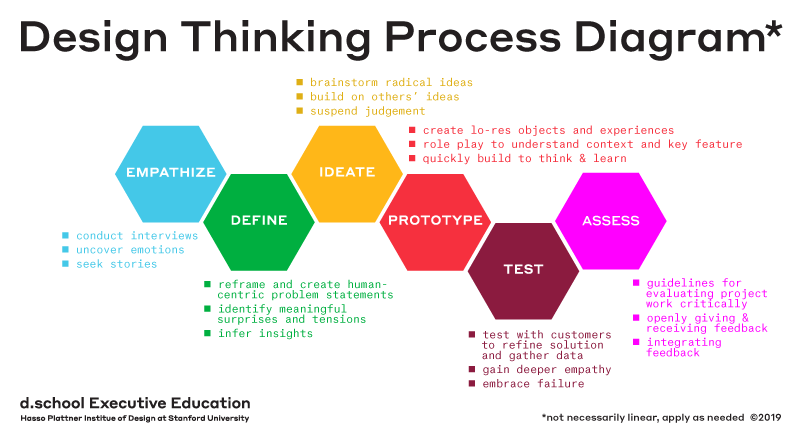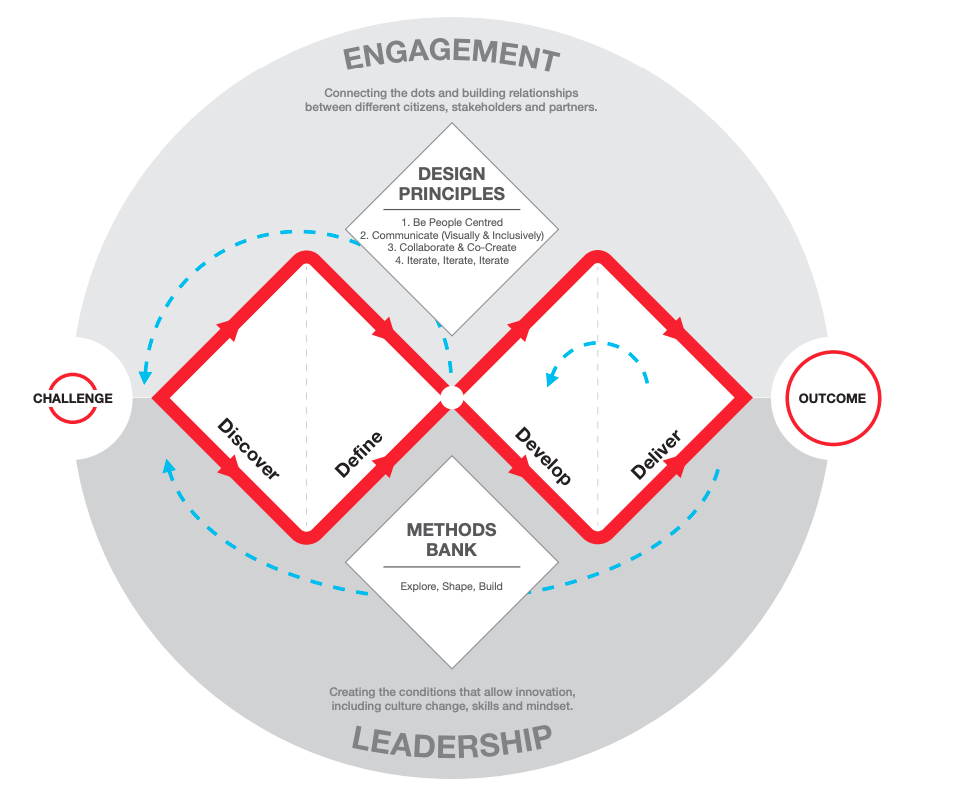What’s the Current State of Innovation?
Overview
In this chapter we’ll be looking at the current state of innovation with learning technologies and surrounding pedagogies.
Why is this important?
It’s important to know what the trends are so that you have a baseline for comparison of where your own practice and your own organisation may lie. Even though your workplace or learning context may not have access to these technologies or may not engage in these practices, simply being aware of them and their implications for teaching and learning is useful, because you can perhaps see the relationship that current practices and technologies may have.
Guiding Questions
As you’re reading through these materials, please consider the following questions, and take notes to ensure you understand their answers as you go.
- How do you think about providing your learners with an innovative and effective learning experience? Where do you start?
- What technologies do you have access to in your workplace or learning context? Do you think they’re innovative? Why or why not?
- When you engaging in lesson planning or curriculum design, what steps do you go through to try to do something new and exciting? Do you WANT to do something new and exciting with your students? Why or why not?
Key Readings
Every year Educause, a nonprofit based in the United States dedicated to pushing higher / tertiary education forward releases a report called The Horizon Report. These reports provide details on trends in the sector, and over the years, different editions of the report are listed that focus on different aspects of education, including universities, Schools (K-12), and even IT security. Feel free to check out past years’ Horizon Reports as well, as they outline other trends that may have come and gone.
You don’t need to read the report in its entirety, just skim through the most relevant sections, then take a look at the implications sections as these outline implications for different countries.
Kalantzis, M., & Cope, B. (2010). The Teacher as Designer: Pedagogy in the New Media Age. E-Learning and Digital Media, 7(3), 200–222. https://doi.org/10.2304/elea.2010.7.3.200 (while this article is quite old, it gives a good overview of how design can inform pedagogy)
Weller, M (2019). 25 Years of EdTech. AU Press. (Have a look through this book and check out anything you’re interested in – it gives a great overview of different technologies over the years)
Web 2.0 & Participatory Culture
When we think about Web 2.0 and its effect on education, the tools that encompass it – blogs, wikis and social media – all had game-changing impacts on teaching and learning. The ability for teachers and students alike to create, edit and share content online changed the internet from being something where we consume information to something where we create. Though the affordances of this technological advance may not be capitalised on by many teachers even now, this is what the internet has been for years. Some may even argue we’re entering the Web3 era (to be covered in later chapters), and that these technologies are not advanced enough to support educational practice.
The term that many researchers use to describe this ability to create that Web 2.0 gave us is ‘Participatory Culture’ (Jenkins, 2009) – this means that our wider culture and in education allows for more active participation as a result of the tools teachers and students now had access to. These tools allowed them to create and participate more widely in the creation and sharing of knowledge. This is another reason that ‘sage on the stage vs. guide on the side’ phrase is important to consider. Previous to this technology existing, teachers and textbooks were the sole source of knowledge, so what are teachers when almost all of human knowledge is available online for free?
Blogs
We all know what a blog is – whether we think about Livejournal, Blogger, WordPress, Medium or any number of blogging platforms that exist now, the key here is that these online journals are still relevant and extremely useful in educational contexts. Any search on google scholar will show that blogs are here to stay, and over the years they’ve proven fantastic for asking students to reflect on their own learning through reflective journalling and even sharing information with each other through shared class blogs. This textbook is even housed on a site using WordPress, a common blogging platform that has since grown into a CMS (Content Management System) platform.
Wikis
These have been around for a long time (e.g., Wikipedia). Derived from the Hawaiian term that means ‘fast’, a wiki provides a fast way to create a series of interlinked web-pages, often used asn encyclopedia or repository of knowledge collected in one site. Wikis are also incredibly valuable in education still. This platform allows teachers and learners to create entries in an online repository of information that cross-links between sections and pages. While we may all be familiar with Wikipedia at this point, the platform that wikipedia runs on is free and open-source, meaning any organisation that wishes to run the platform can do so. (see UBC Wiki as an example)
Podcasts
Another form of media that came about in the Web 2.0 period was a podcast. Often misidentified in educational contexts, a podcast is a series of audio files collected together like a radio show, with the key functionality of subscription through an application on your computer or smartphone. Most podcasts we listen to are a series, with new episodes released weekly, or hosted in an archive of episodes that span a set amount of time (e.g., limited series). In some cases, we may see a single audio file branded as a ‘podcast’ in educational settings, however this is erroneous as there is no subscription or subsequent episodes to be found. We can therefore simply refer to this by what it is – an audio file. Podcasts in themselves have been an alternative means to deliver content across a unit of learning, allowing students to listen to learning materials on their way to work, as they exercise and other more flexible means of consumption.
ePortfolios
Portfolios have always been a great way for students to create a collection of evidence of their learning. There are different platforms available dedicated to the creation of ePortfolios – sometime separate platforms like Mahara or PebblePad, and sometimes built into a Learning Management System (LMS). Some of the challenges around the use of ePortfolios have been portability (who owns the ePortfolio and can the student take it with them?), ePortfolios as assignments (are they more reflective or representative of learning) as well as their general implementation as a required part of the curriculum.
As Web 2.0 technologies have been around for almost 20 years, their use and application has evolved over time, especially in education. Some have increased in ubiquity and others have decreased, while others have simply evolved into more contemporary forms, expanding their capabilities to allow for more visual content such as pictures and video, and even more interactivity.
Innovation is relative
One thing to be mindful of is that innovation is always relative. Advancement and change occur at different paces and in different ways wherever you are. If you teach in a small rural school, what innovation looks like there might be very different than at a large polytechnic university in a city, so it’s important to consider how innovation is treated in these different contexts and what you as an individual are able to do within the opportunities and constraints that exist where you are.
Innovation is not a race, and while it may be frustrating to run into a brick wall in terms of the conflict between what you WANT to do and what you CAN do, its important to consider that innovation takes time, and we are bringing more than just ourselves along for the ride – our students, our colleagues and even our administrators need to understand and get behind what we’re doing so that innovation is successful.
Design Thinking
Innovation in any situation takes practice and it takes different ways of thinking. Over the years, ‘Design Thinking’ has been a trend that describes how people think about solving problems in different ways.
Design thinking helps us to consider different approaches to the same problem and gets us thinking ‘outside the box’ so that we can solve a problem in different ways. This is useful in educational settings because because many educators, without specific training in how to teach, may ‘teach the way they were taught’ or not have the time or energy to consider other possibilities, and these design thinking frameworks give a structured way to step outside of that existing ‘default’ process.


Double-Diamond Design Thinking from the UK’s Design Council is another framework that articulates design thinking for innovation.
So what’s the value in these models for teaching and learning? When we’re trying to solve a pedagogical problem – in other words, develop a lesson plan or assignment – we may be limited in terms of our own experience, the available tools and technologies at our organisation or government standards that we need to conform to. Design thinking and other techniques allow us to think about these problems in different ways.
Brainstorming
Another strategy that can help us to innovate is brainstorming. Yes, we’ve been doing this since we were children, but there are a number of different strategies used in the design field that we can apply to our own teaching practice. The video below comes of an Interaction Design class in the United States, so while it is focused on product and mobile and web app design, the brainstorming techniques may still prove useful.
Key Take-Aways
- Innovation is relative, but we have agency in our workplaces and learning contexts to innovate given the opportunities and constraints available to us.
- Web 2.0 technologies, like blogs, wikis, social media and ePortfolios are an important starting point to understand when we innovate in our practice, but may be considered ‘legacy’ by some educators.
- Design Thinking and brainstorming are valuable tools in our ‘toolbox’ for innovating in lesson or curriculum design AND are incredibly valuable when asking our students to engage as well – THEY can also take part in these processes.
Revisit Guiding Questions
Revisit the title of this chapter and try to answer it yourself by continuing the answer “The current state Innovation in education has to do with…”
When revisiting the guiding questions above, consider where you’d like to go with your teaching experiences, and how you might look at what you experience as a learner from here on out. It’s ok to be critical of your experiences as a learner, as this is a way for you to become a better instructional / learning designer.
Conclusion / Next Steps
Now that we know a little bit about the last decade of innovation as well as what it takes to get our minds out of conventional ways of solving problems, in the next chapter, we’ll be exploring trends in pedagogy – without different approaches to teaching and learning, new approaches to using technology would not have any application, and as always, ‘Pedagogy should come before technology’.
References
Jenkins, H. (2009). Confronting the challenges of participatory culture: Media education for the 21st century. MIT Press. (Free Open Textbook)
Lorenzo, G., & Ittelson, J. (2005). An overview of e-portfolios. Educause learning initiative, 1(1), 1-27.
Further Reading
Greenhow, C., & Lewin, C. (2016). Social media and education: Reconceptualizing the boundaries of formal and informal learning. Learning, media and technology, 41(1), 6-30.
Mouza, C., & Lavigne, N. (Eds.). (2012). Emerging technologies for the classroom: A learning sciences perspective. Springer Science & Business Media.
Did this chapter help you learn?
100% of 7 voters found this helpful.
Provide Feedback on this Chapter